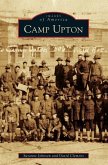Ground breaking for Camp Crowder occurred on August 30, 1941, led by the engineering firm of Burns and McDonnell, of Kansas City, Missouri. During World War II, Camp Crowder became the duty location for contingents of the Women's Army Corps, the home to a Signal Corps Replacement Training Center, and provided basic training to new recruits. While thousands of Signal Corps recruits trained on the nearly 43,000-acre site, a prisoner of war camp was created to house more than 2,000 prisoners, the majority of whom were captured German soldiers. Camp Crowder's legacy has been perpetuated through the decades by the late Mort Walker, creator of the iconic Beetle Bailey comic strip, who received inspiration for his fictional Camp Swampy while stationed at the camp in 1943. Additionally, episodes of The Dick Van Dyke Show paid homage to Camp Crowder since the show's creator, Carl Reiner, spent time there in World War II. In later years, much of the camp's original property became home to Crowder College while 4,358 acres has been retained by the Missouri National Guard for use as a training site.
Hinweis: Dieser Artikel kann nur an eine deutsche Lieferadresse ausgeliefert werden.
Hinweis: Dieser Artikel kann nur an eine deutsche Lieferadresse ausgeliefert werden.








